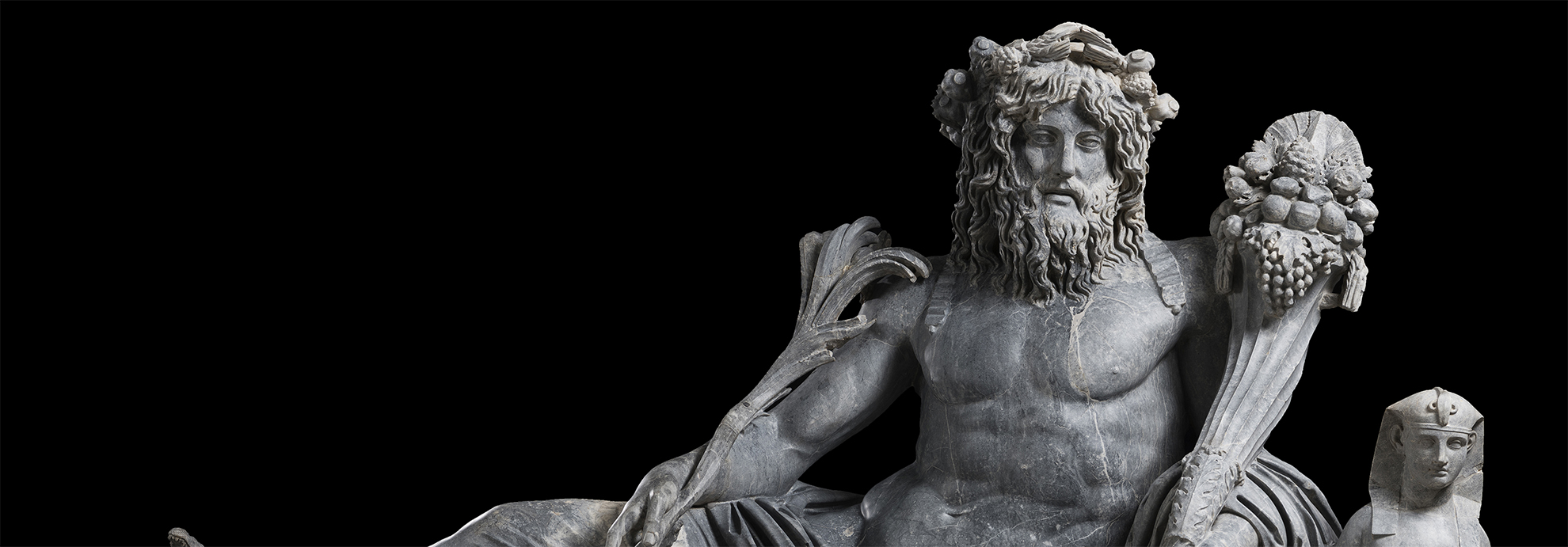In the Kimbell Art Museum’s Renzo Piano Pavilion, 58 ancient marble sculptures—some gods, others emperors, still others ordinary Romans—stand in commanding silence, carrying with them the weight of centuries.
“It’s difficult to overstate how rare this is,” says Jennifer Casler Price, the Kimbell’s senior curator of Asian, African, and ancient American art and curator of the exhibition. “Even if you traveled to Rome, you would not see this collection. It has been largely inaccessible for decades. To have it here in Texas … it’s historic.”
The Torlonia Collection has long held an almost mythical reputation among scholars. Assembled mostly in the 19th century by Prince Giovanni Torlonia and his son Alessandro, it became a “collection of collections,” purchased from Rome’s noble families and expanded through extensive archaeological digs on Torlonia estates. By 1876, Alessandro had founded a private museum in Rome to showcase the more than 600 marble masterpieces, which range in date from the 5th century BC to the early 4th century AD. Yet when World War II forced its closure, the sculptures disappeared from public view.
That invisibility ended in 2020, when Fondazione Torlonia unveiled the sculptures in Rome. Crowds followed in Milan and, most recently, in Paris at the Louvre, where the exhibition drew record audiences.
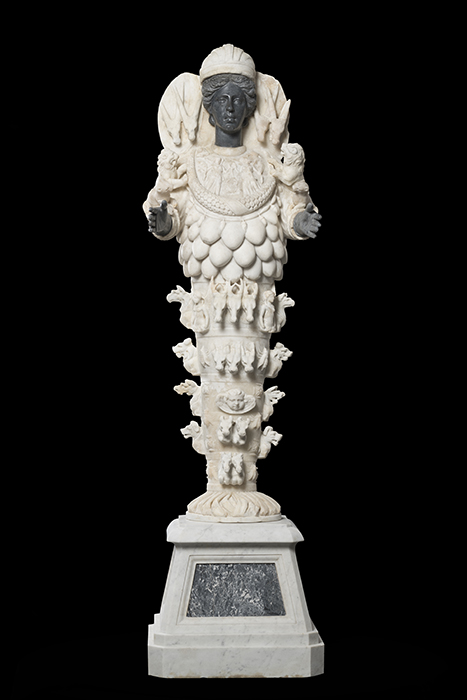
1 ⁄9
Statue of Artemis Ephesia, Roman, Imperial Period (2nd century AD), marble. Torlonia Collection, Rome. © Fondazione Torlonia. Photo by Lorenzo De Masi.
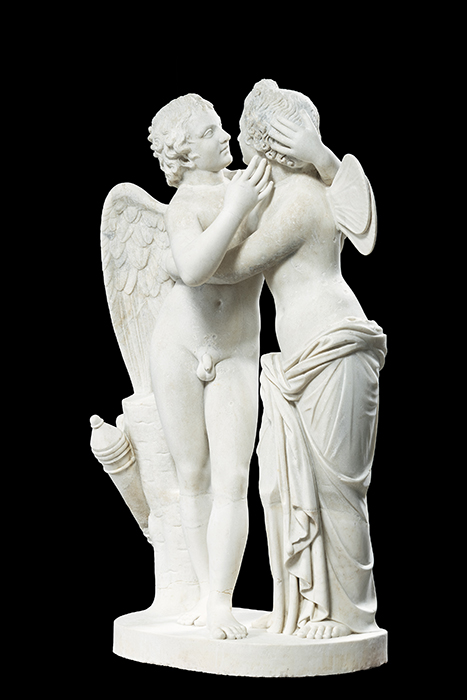
2 ⁄9
Statue of Cupid and Psyche, Roman, Imperial Period (second half of 2nd century AD), marble. Torlonia Collection, Rome. © Fondazione Torlonia. Photo by Lorenzo De Masi.
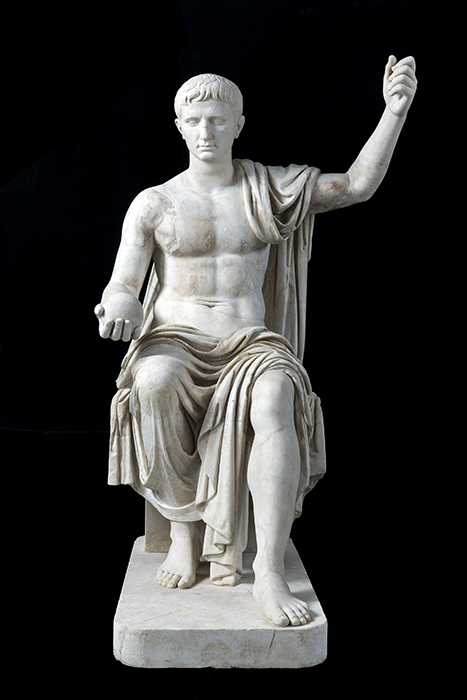
3 ⁄9
Statue of an Emperor on a Throne with Portrait of Augustus, Roman, Imperial Period (1st century AD),marble. Torlonia Collection, Rome. © Fondazione Torlonia. Photo by Lorenzo De Masi.
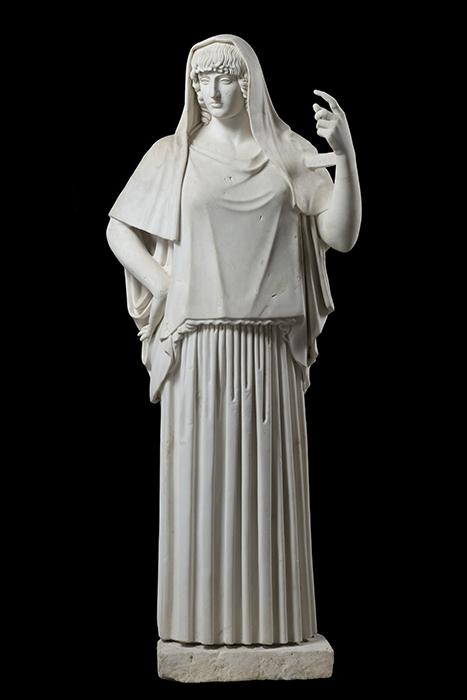
4 ⁄9
Statue of a Goddess, known as the Hestia Giustiniani, Roman, Imperial Period, Hadrianic Era (first half of 2nd century AD), marble. Torlonia Collection, Rome. © Fondazione Torlonia. Photo by Lorenzo De Masi.
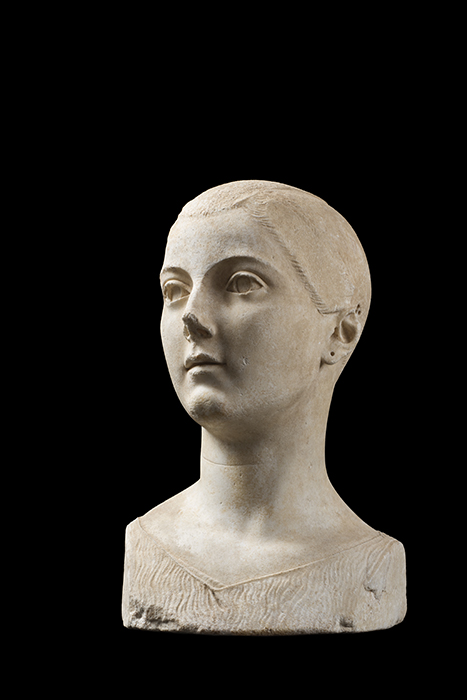
5 ⁄9
Portrait of a Young Woman, known as the Maiden of Vulci, Roman, late Republican Period (mid-1st century BC), marble. Torlonia Collection, Rome. © Fondazione Torlonia. Photo by Lorenzo De Masi.
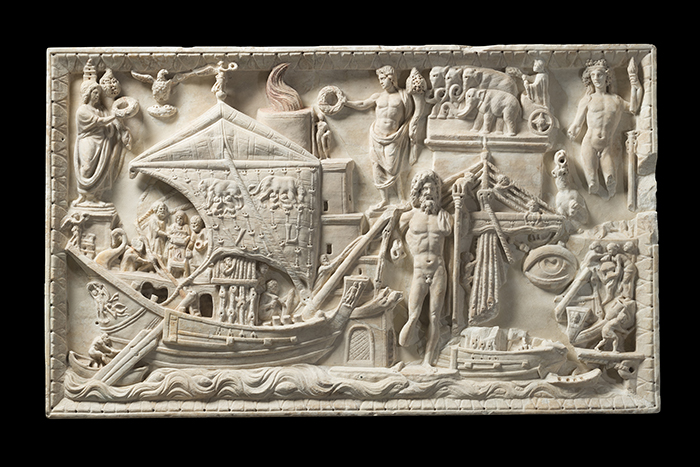
6 ⁄9
Portus Relief, Roman, Imperial Period (2nd–3rd century AD), marble. Torlonia Collection, Rome. © Fondazione Torlonia. Photo by Lorenzo De Masi.
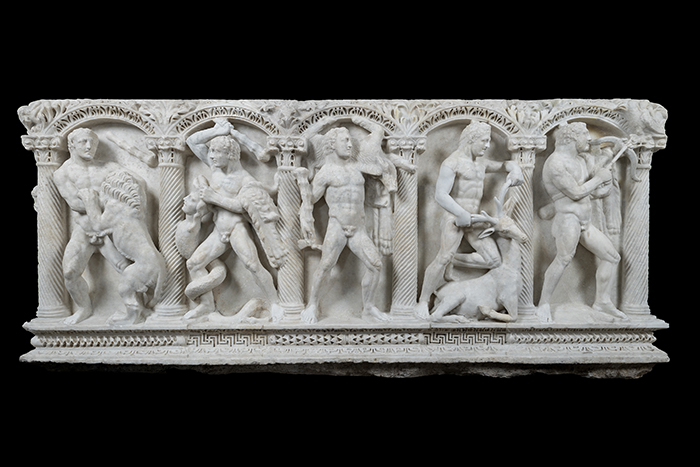
7 ⁄9
Sarcophagus Depicting the Labors of Hercules and Lid with Reclining Couple, Roman, Imperial Period (second half of 2nd century AD), marble. Torlonia Collection, Rome. © Fondazione Torlonia. Photoby Lorenzo De Masi.
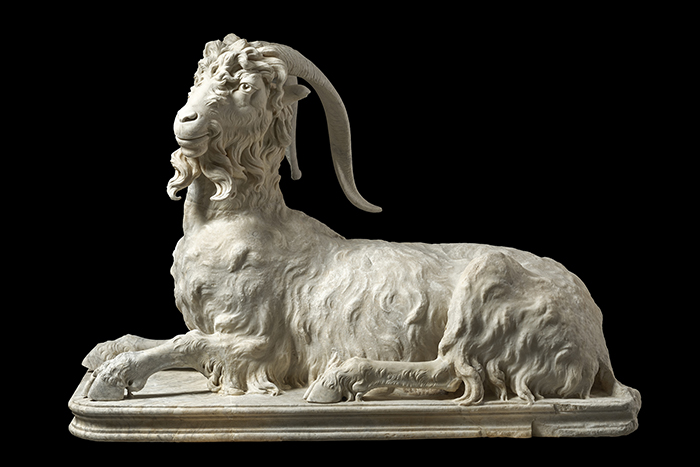
8 ⁄9
Statue of a Resting Goat, Roman, Imperial Period, Trajanic Era (body: late 1st century; head: attributed to Gian Lorenzo Bernini [1598–1680]), marble. Torlonia Collection, Rome. © Fondazione Torlonia. Photo by Lorenzo De Mas.
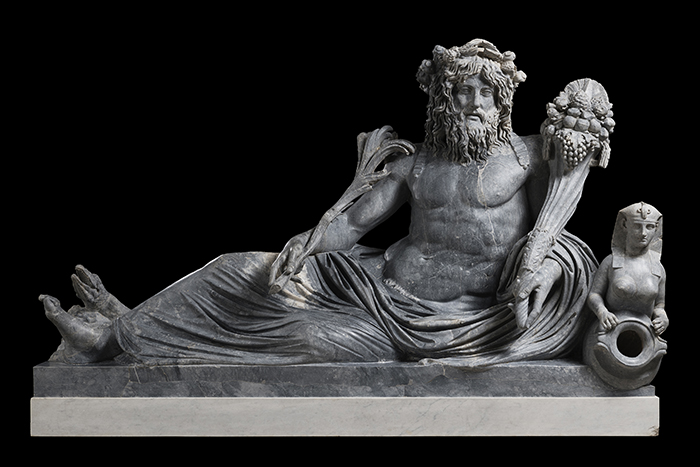
9 ⁄9
The Torlonia Nile, Formerly the Barberini-Albani Nile, Roman, Imperial Period, Flavian Era (late 1st century AD), gray marble. Torlonia Collection, Rome. © Fondazione Torlonia. Photo by Lorenzo De Masi
“This is the first exhibition of ancient Roman sculpture in the Kimbell’s fifty-three-year history,” says Kimbell director Eric Lee, “and it is all the more exciting because the legendary Torlonia Collection has been largely unseen for the last 70 years.”
The exhibition unfolds across six thematic sections, each designed to capture a facet of Roman life and imagination. Visitors first encounter three “Icons of the Torlonia Collection,” among them the Maiden of Vulci, a singular representation of Roman female portraiture from the 1st century BC.
“Ideal Bodies and Model Behavior” explores the Roman fascination with Greek gods and myths, including the striking Hestia Giustiniani, a goddess sculpted in the rare severe style. “Strategies of Succession” introduces the emperors—Trajan, Hadrian, Marcus Aurelius, Commodus, Septimius Severus—rendered in a realism that doubles as propaganda. “There’s a reason why the emperors were always depicted as young and strong,” laughs Casler Price.
The “Restoration and Reconstruction” section highlights how sculptures were remade over centuries. Collectors in the Renaissance and Baroque periods often enlisted the era’s leading artists to restore antiquities. A modest ram, for instance, became a marvel when the young Gian Lorenzo Bernini sculpted its hooves and head, eyes sparkling and horns curling with astonishing energy. “You can feel the life in it,” says Casler Price. “Bernini turned a regular goat into the G.O.A.T.”
“Torlonia Excavations” spotlights an Attic Votive Relief from the fifth century BC, which is the only Greek sculpture in the exhibition and the earliest work in the entire Torlonia Collection. The Portus Relief offers a rare representation of the place where it was found, combining elements of the architectural and commercial landscape with symbolic motifs and deities.
What sets Fort Worth’s presentation apart from its predecessors is not only the selection of sculptures but also the main space itself. Casler Price resisted the usual impulse to divide the Renzo Piano Pavilion with walls, instead emphasizing its soaring sightlines and natural light.
“When you walk in, you can imagine yourself 2,000 years ago in Rome,” Casler Price explains. “Sculpture was everywhere, in forums, theaters, bathhouses. It was their visual language, much like social media today.”
None of the sculptures look today as they did when they left their ancient workshops. Therefore, every work in Myth & Marble is accompanied by a conservation diagram, tracing what is original, what was restored in antiquity, and what was added by Renaissance hands. These layered histories remind viewers that the marbles are not frozen relics but evolving witnesses to human imagination.
“Their meanings and functions may have changed, but they still speak to us,” reflects Casler Price. “This is a can’t-miss moment. We are truly bringing a little bit of Rome to Texas.”
—LINDSEY WILSON

